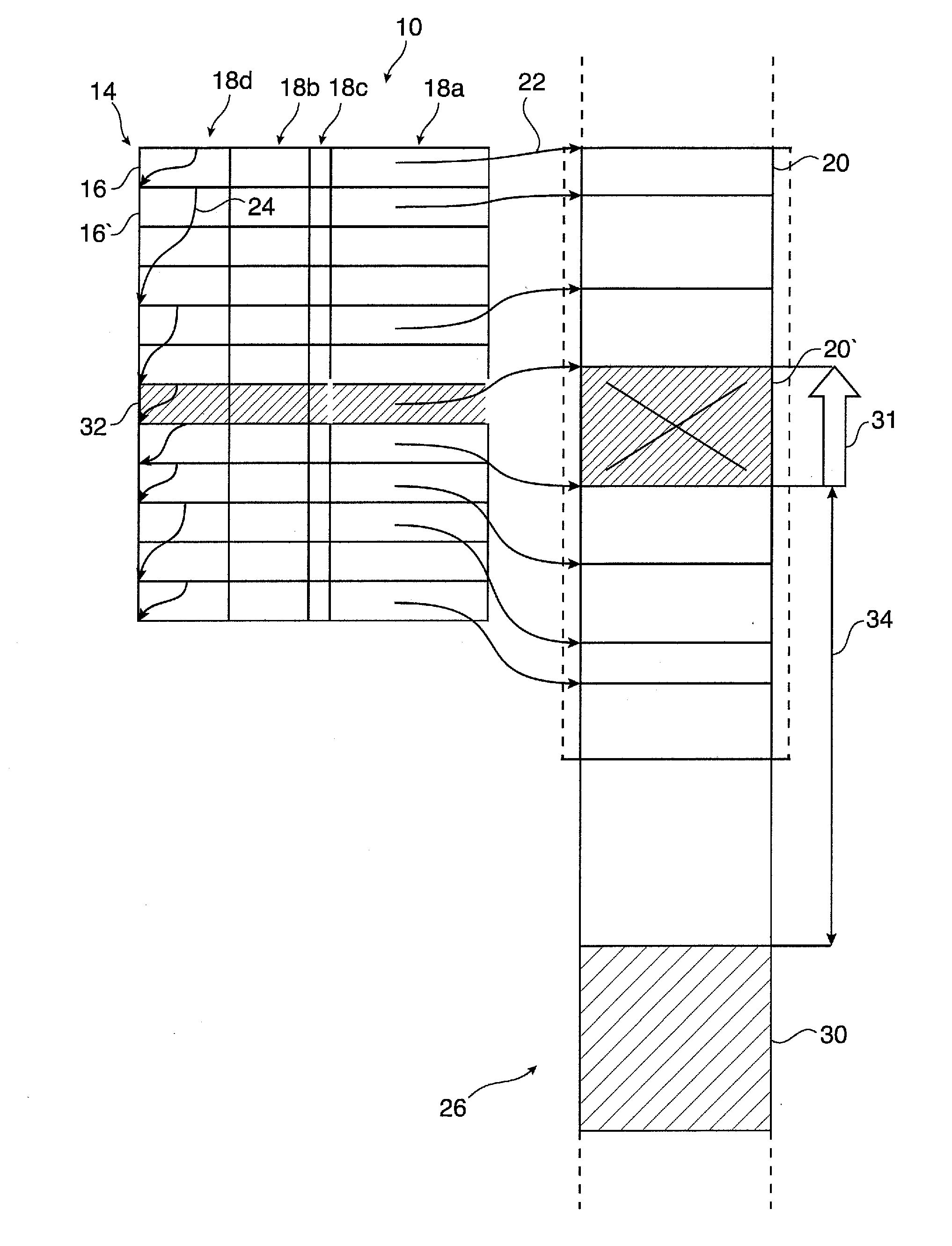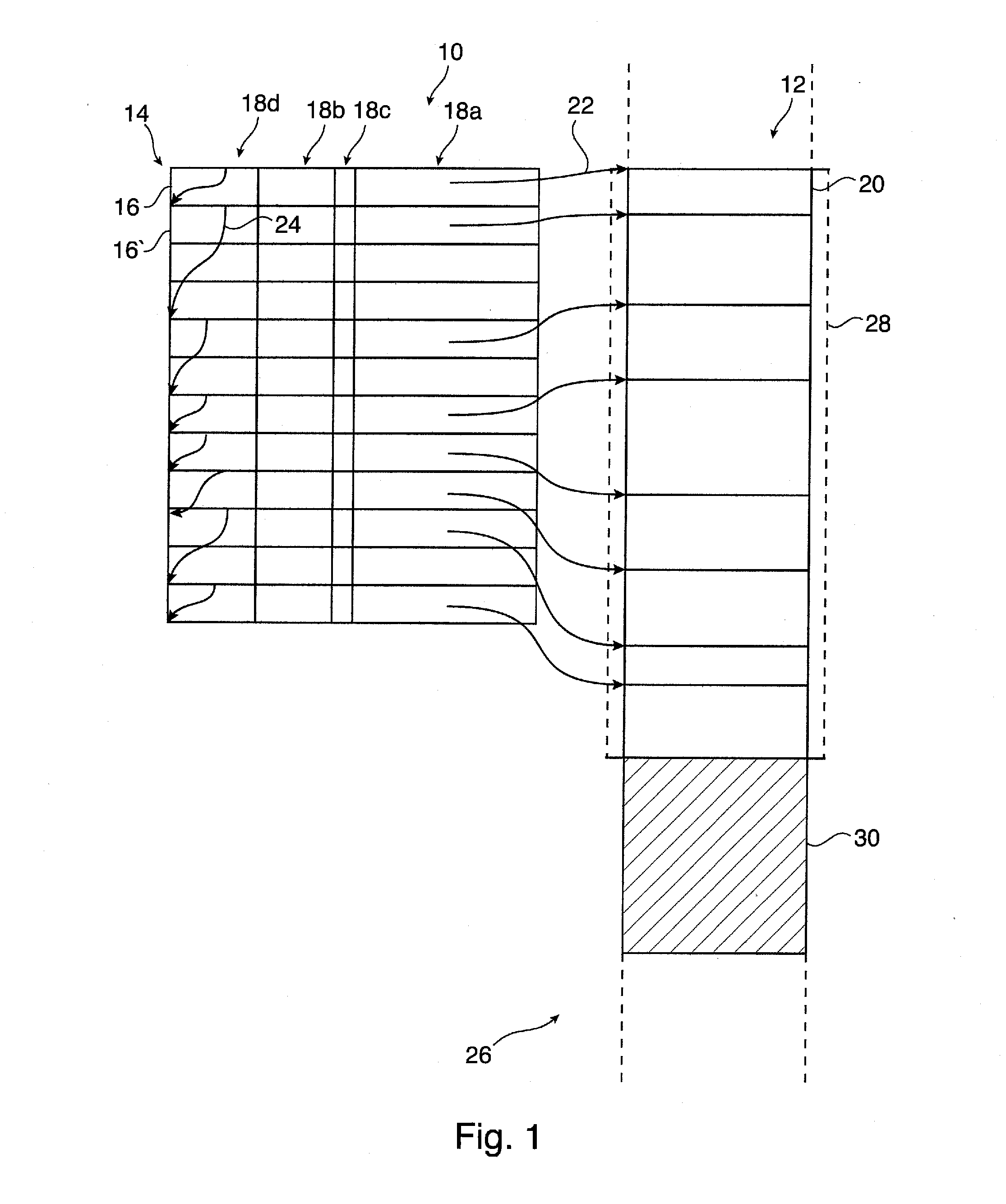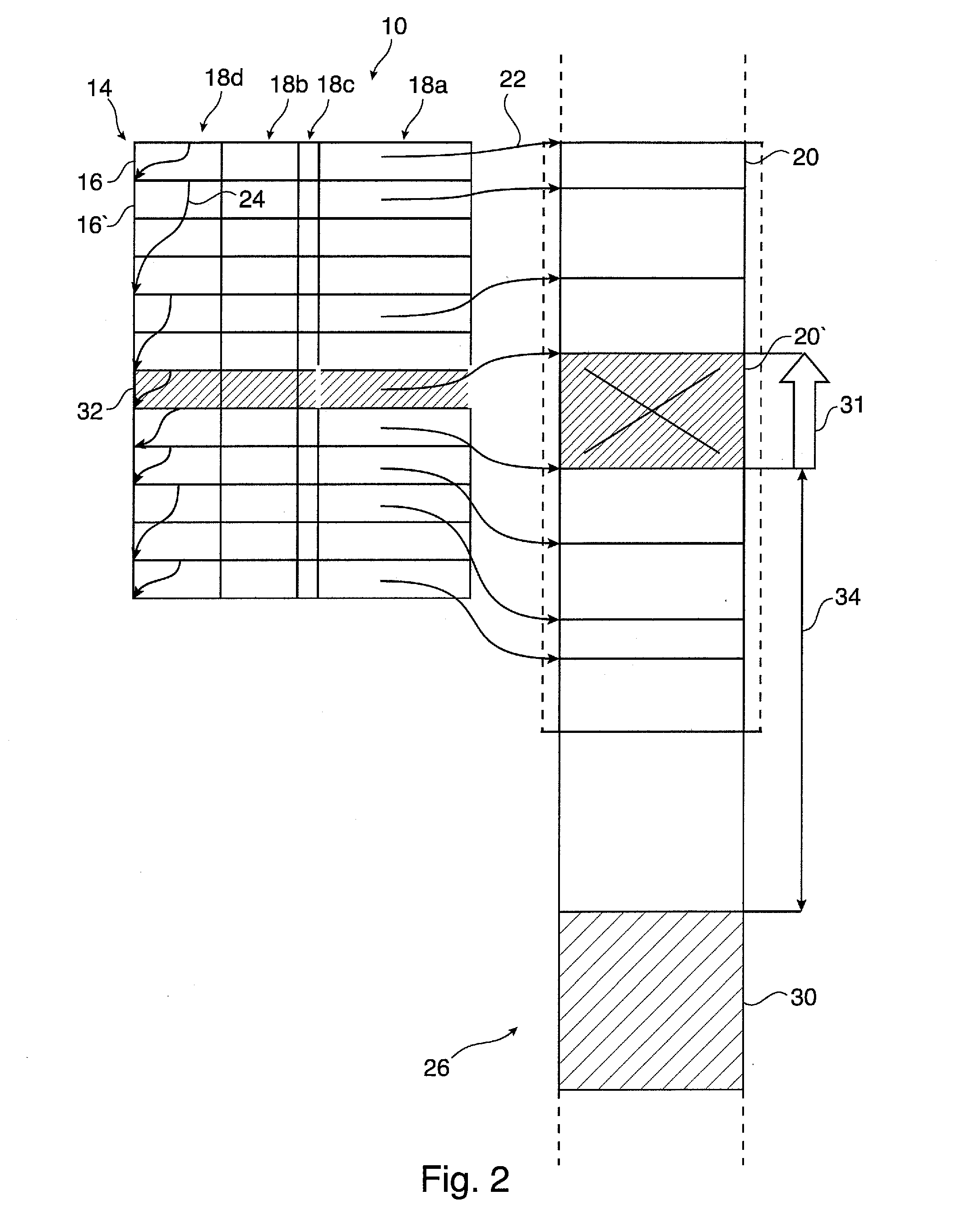Management Of A Memory
a memory and management technology, applied in the direction of memory adressing/allocation/relocation, input/output to record carriers, instruments, etc., can solve the problems of inability to completely eliminate fragmentation, certain drawbacks, and may not always be suitable, so as to eliminate the fragmentation of the memory
- Summary
- Abstract
- Description
- Claims
- Application Information
AI Technical Summary
Benefits of technology
Problems solved by technology
Method used
Image
Examples
Embodiment Construction
[0042]FIG. 1 schematically shows a translation table 10 and its interconnection with a memory pool 12 according to an embodiment of the invention.
[0043]The translation table 10 comprises a fixed number of entries 14, each of which may be referenced with an identification key 16, 16′. An identification key 16, 16′ may in this context be understood as a position or row in the translation table 10 or a running integer number.
[0044]For example, certain identification keys 16 are associated with an allocated memory segment 20 in the memory pool 12, respectively, and other identification keys 16′ are not associated with the memory pool 12. The unassociated identification keys 16′ may thus be regarded as free.
[0045]For each identification key 16, which is associated with an allocated memory segment 20, the translation table 10 comprises a field 18a with a reference 22 to a start address and a field 18b with a size of the allocated memory segment 20. The start address and the size of each a...
PUM
 Login to View More
Login to View More Abstract
Description
Claims
Application Information
 Login to View More
Login to View More - R&D
- Intellectual Property
- Life Sciences
- Materials
- Tech Scout
- Unparalleled Data Quality
- Higher Quality Content
- 60% Fewer Hallucinations
Browse by: Latest US Patents, China's latest patents, Technical Efficacy Thesaurus, Application Domain, Technology Topic, Popular Technical Reports.
© 2025 PatSnap. All rights reserved.Legal|Privacy policy|Modern Slavery Act Transparency Statement|Sitemap|About US| Contact US: help@patsnap.com



